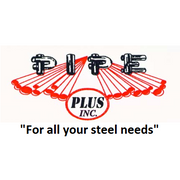
If you are raising cattle, keeping them in a controlled environment can be a challenge. One effective method of keeping them in your fields is installing cattle guards made with steel piping. Here is what you should know about this option for your livestock.
What Is a Cattle Guard?
A cattle guard is a method of controlling livestock, preventing them from walking off your property via ungated roads. This structure is also called a cattle grate or grid. To create the guard, a section of driveway must be dug out, creating a pit or depression. Then the contractor then places an overlay of molded concrete ridges or structural steel piping, evenly spaced over the pit.
How Does It Work?

Cattle have limited depth perception. They will not cross the guard because they cannot tell how deep the space under the piping is, and their legs will fall through, so they are afraid to walk out on it. This solution keeps the livestock from leaving through the gateway, but vehicles and surefooted human pedestrians can enter and exit the area freely.
What Are the Benefits of Steel Cattle Guards?
Installing cattle guards can eliminate your having to open and close gates to drive in and out of livestock yards and fields. Steel piping is an excellent option for cattle grids due to its strength and durability. Steel also weighs less than concrete, making it easier and less expensive to transport the pipes from the fabrication shop to the installation location. To ensure the guards function properly in various weather conditions, fabricators often paint the metal or use galvanized steel.
When you need metal fabrication for projects, including cattle guard installation, turn to Pipe Plus Inc. Since 1997, this fabrication shop has delivered high-quality materials and top-notch services to business and commercial customers in Willow Springs, MO, and throughout the United States. This company provides steel piping and structural steel for agricultural and construction projects, including hay feeders, grain bins, and tubing. Call (417) 469-5292 to request an estimate.
About the Business
Have a question? Ask the experts!
Send your question

